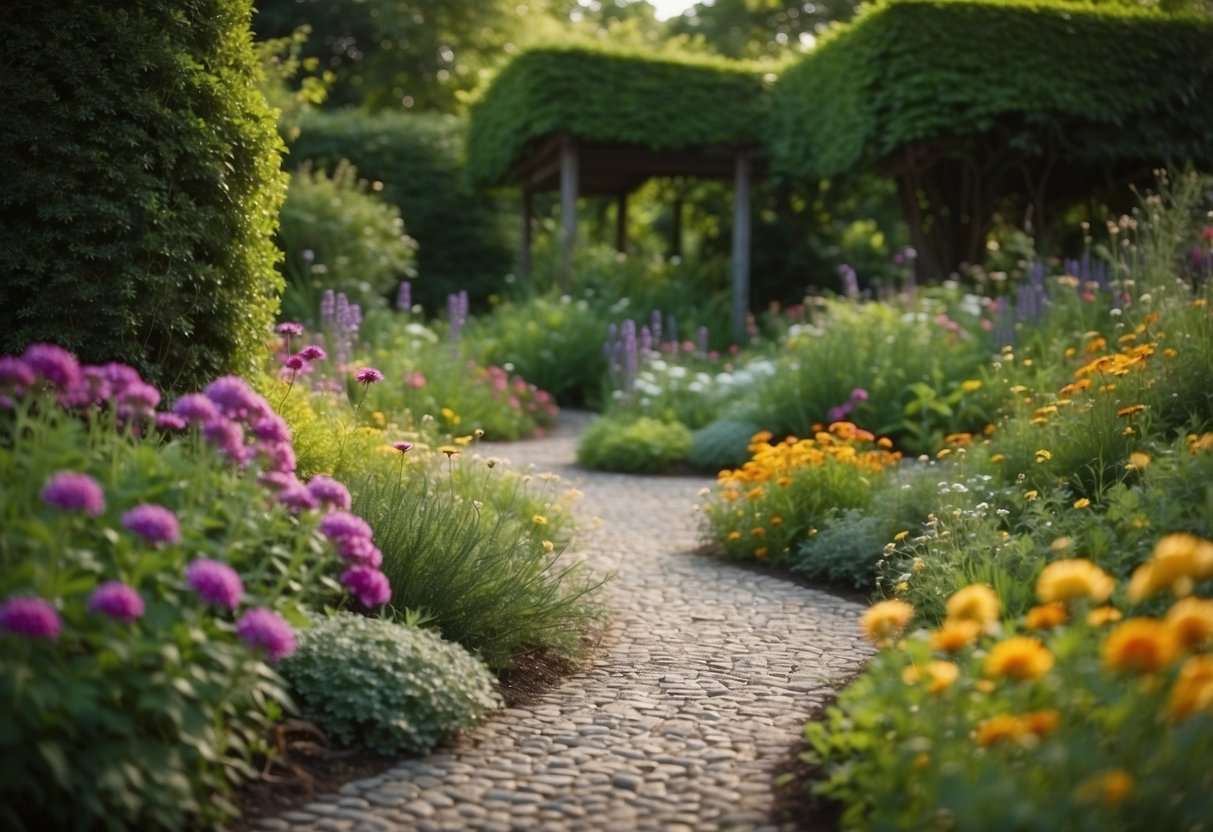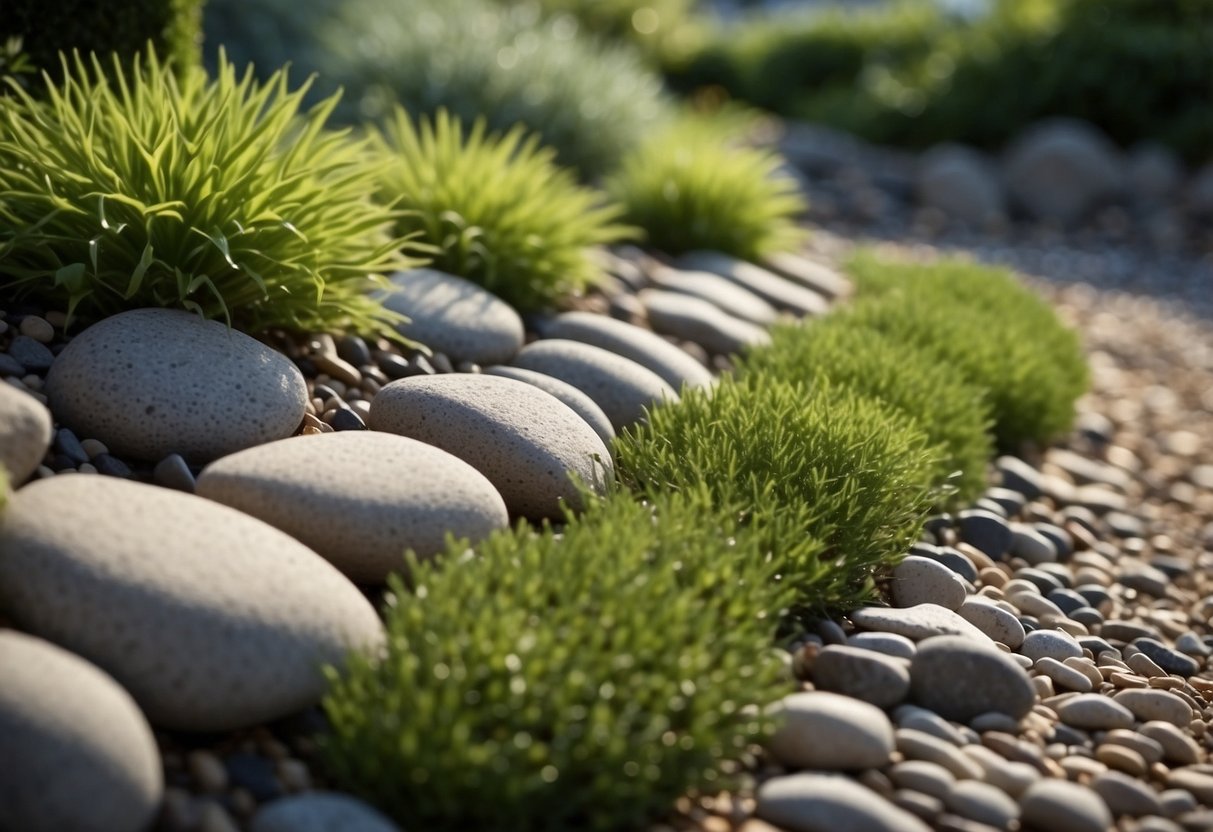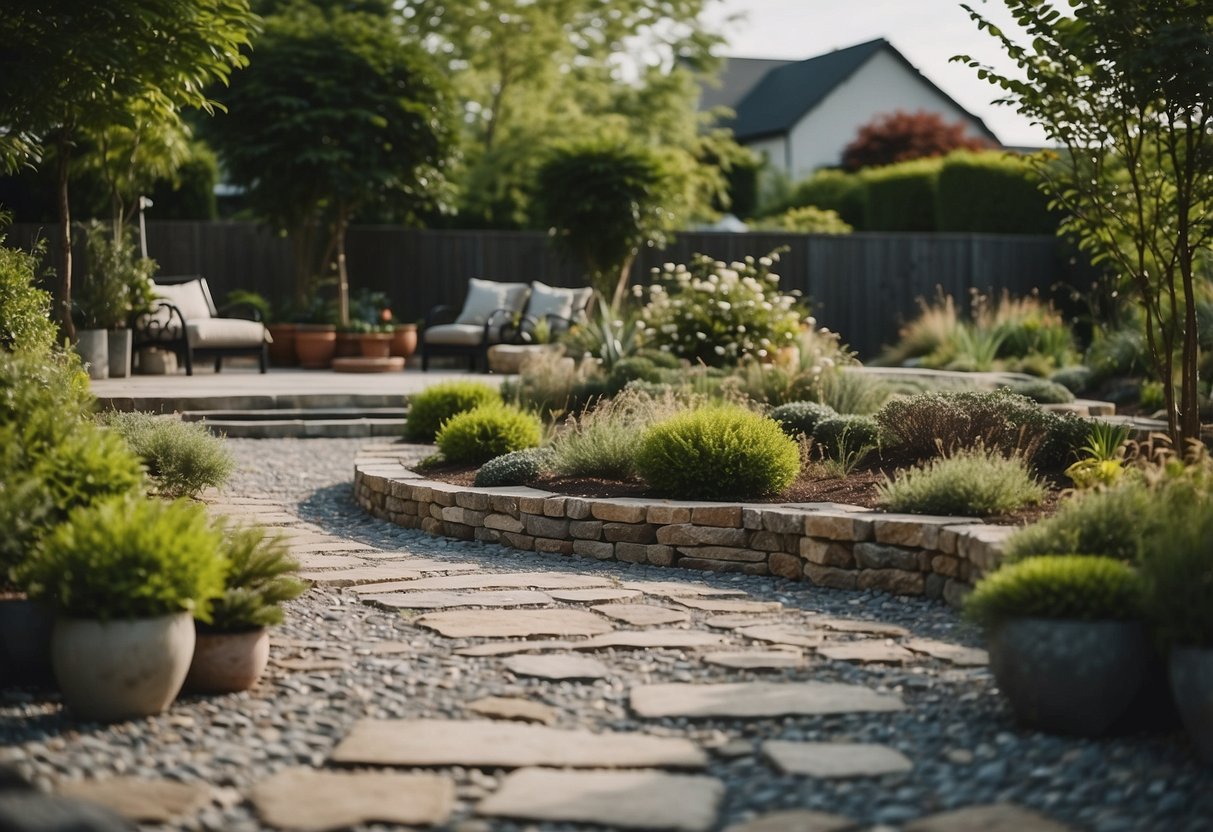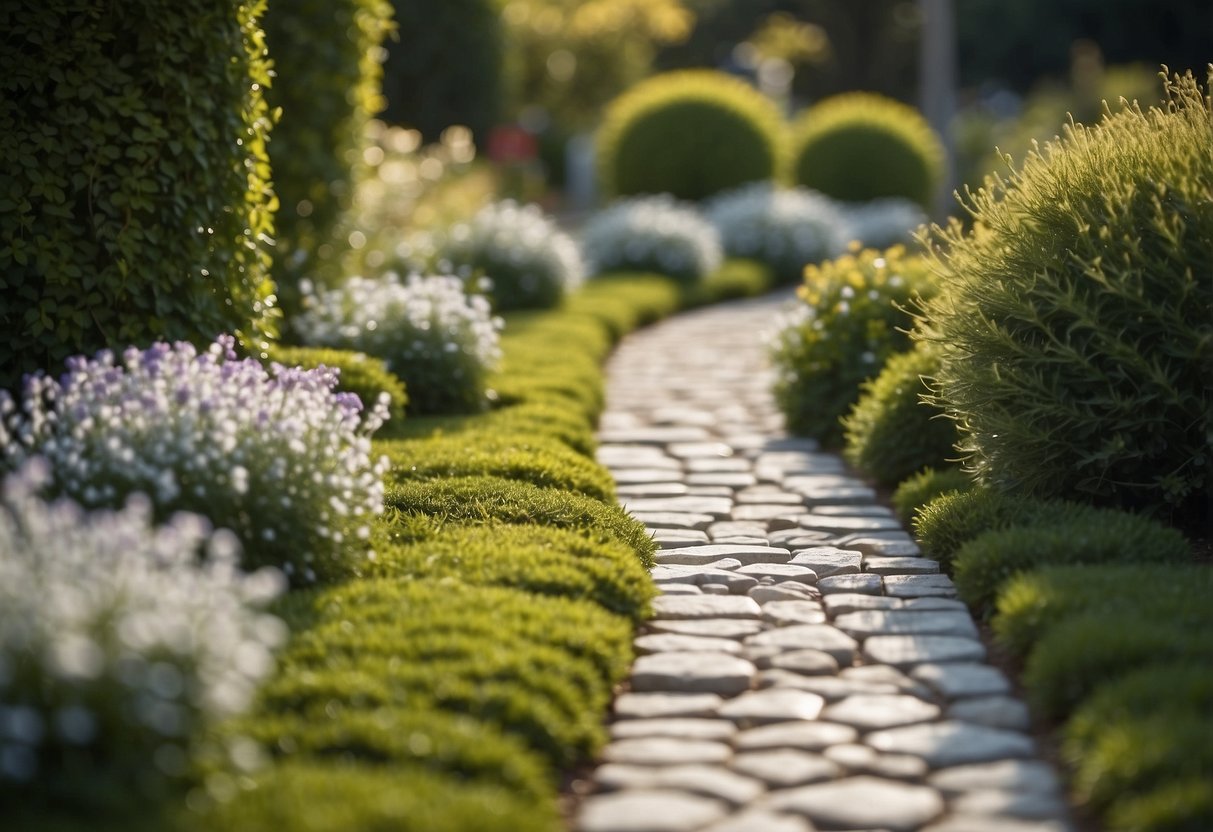Garden Slabs and Gravel Ideas: Transform Your Outdoor Space
Transforming your garden into a beautiful and functional space can seem like a big task, but it doesn’t have to be overwhelming. By incorporating garden slabs and gravel, you can create a stunning outdoor area that’s both easy to maintain and lovely to look at. How do you choose the right materials to make your outdoor space inviting and practical?

Whether you’re planning a quiet retreat or a lively area for gatherings, using a mix of garden slabs and gravel offers great flexibility. From designing pathways to creating cozy seating areas, these elements can be tailored to fit any style or budget. Ready to make your garden the best it can be?
1) Bluestone Pavers

Bluestone is a great option for your garden. It has a natural look and comes in shades of blue and gray. It’s also very durable and can handle outdoor weather.
You can use bluestone pavers to make paths or patios. They are low-maintenance and just need a gentle wash every few years.
Bluestone can be a bit pricey, ranging from $15 to $30 per square foot, but it’s worth it for the beauty and durability it brings to your garden spaces. For more ideas, check out how to use bluestone in your garden.
2) Pea Gravel Paths

Pea gravel paths are a great addition to any garden. They are easy to install and maintain. You can create a path that winds through your garden or a straight walkway from your house to the garden.
To begin, clear the area and lay down a weed barrier. Next, add a border to keep the gravel contained.
Finally, pour the pea gravel and spread it evenly. For a polished look, consider using pavers along the edges. This creates a neat and tidy finish.
Pea gravel is an affordable and attractive option for garden paths. The small, smooth stones provide good drainage and a pleasing crunch underfoot.
3) Flagstone Walkways

Flagstone walkways are a charming addition to any garden. They offer a natural look that blends well with greenery and flowers. You can create unique patterns, such as mosaics, using different shapes and sizes of stones.
Filling the gaps between the stones with grass, river pebbles, or gravel adds more texture and interest to your path. These walkways are not just practical but also enhance the beauty of your outdoor space. Make sure to choose flagstones that match the style of your garden for a cohesive look.
4) River Rock Borders

River rock borders can add a natural and charming touch to your garden.
To create a border, simply line up river rocks along the edge of your garden bed or pathway.
You can use rocks of different sizes and colors to add depth and texture.
Another idea is to stack river rocks for a more rustic look. This can give your garden a cozy, cottage feel.
Using river rocks as borders can help define spaces and add a unique, artistic element to your yard. For more ideas, check out these river rock landscaping inspirations.
5) Slate Patio Tiles

Slate patio tiles can give your garden a sleek and modern look. They come in various shades, such as grey, black, and even green. These tiles are known for their durability and ability to withstand varying weather conditions.
Though it might be a bit more expensive, a slate patio is worth the investment for its aesthetic appeal. These tiles are also slip-resistant, making them a safe choice for outdoor areas.
6) Limestone Steps

Limestone steps can transform the look of your garden. They are durable and come in many colors like blue, gray, and tan. These steps are ideal for creating a natural feel in your outdoor space.
You can carve limestone into intricate designs, adding a unique touch. Limestone is also perfect for garden steps because it’s softer and easier to work with. Explore different design options to see what fits best with your garden.
Consider adding limestone steps to enhance both the beauty and functionality of your space. They create a timeless and elegant look that you’ll love.
7) Granite Patio Slabs

Granite patio slabs are a durable and stylish option for your garden. They offer a sleek, modern look that complements various outdoor settings. The natural variations in granite provide unique patterns and colors, making each slab one of a kind.
You can pair granite slabs with gravel for an interesting texture contrast. This combination can create a chic and functional patio area. For more ideas on granite patios, visit this site.
8) Crushed Granite Driveway

A crushed granite driveway offers a classic and elegant look for your home. Its texture and tint make it stand out, giving your driveway a unique and polished appearance.
Crushed granite is durable and can withstand heavy traffic. This makes it a practical choice for busy households.
Installing a crushed granite driveway is also relatively easy and cost-effective. This makes it a great option if you’re looking for an affordable yet stylish driveway solution. For more ideas, visit this page on gravel driveway ideas.
9) Cobblestone Pathways

Cobblestone pathways add a charming, old-world feel to your garden. They are both durable and visually appealing.
You can lay cobblestones in various patterns, such as herringbone or basket weave, to create a unique look.
Including plants along the edges can soften the hard texture and blend the pathway with the surrounding garden. For more ideas on cobblestone pathways, check out these inspiring garden stone pathway ideas.
10) Marble Garden Edging

Marble garden edging adds a touch of elegance to your outdoor space. The smooth, polished look of marble enhances the beauty of your garden.
Besides being visually appealing, marble is durable and weather-resistant. This makes it a long-lasting choice for garden borders.
You can find marble edging in various colors, allowing you to match it with your garden’s theme easily.
Choosing the Right Garden Slabs

Selecting garden slabs involves choosing the right material and the correct size and thickness. Each type of material offers different benefits, and the size and thickness of the slabs will impact both appearance and durability.
Material Types
When choosing garden slabs, the most common materials include concrete, natural stone, and porcelain.
Concrete slabs are durable, affordable, and available in many colors and finishes. They can be molded into various shapes and patterns, making them versatile for different garden styles.
Natural stone slabs, such as sandstone, granite, and slate, give a more traditional and elegant look. They are long-lasting and come in unique patterns and textures. However, these can be more expensive and require more maintenance than concrete.
Porcelain slabs are known for their sleek finish and stain resistance. They are available in various colors and designs, mimicking natural stone or wood. Porcelain is also less porous than natural stone, making it easier to clean and ideal for wet climates.
Sizing and Thickness
The size and thickness of your garden slabs will depend on the area and the type of use.
For pathways, smaller slabs, typically 300×300 mm, are easier to handle and fit better into tight spaces. In contrast, larger slabs (e.g., 600×600 mm) are suitable for patios or broader areas, providing a more seamless look.
The thickness of the slabs is crucial for longevity. For most garden areas, slabs should be at least 20-30 mm thick. Thicker slabs (over 50 mm) are recommended for heavy traffic areas or driveways to resist cracking and shifting.
Choosing the appropriate size and thickness ensures the slabs will handle the expected load and stress, keeping your garden both functional and beautiful for years to come.
Incorporating Gravel into Your Garden Design

You can add a modern touch to your garden by using gravel. This section will help you choose the right type and color, as well as maintain your gravel areas.
Gravel Types and Colors
Gravel comes in various types and colors, each offering a unique look. Pea gravel is small and smooth, making it perfect for walkways. Crushed stone adds a rugged texture, ideal for driveways and larger areas. Decomposed granite is finer and can create a natural, soft surface.
Colors range from whites and grays to vivid reds and deep blacks. Darker colors like black gravel can create a striking contrast with green plants and bright flowers. On the other hand, lighter colors like white gravel can make small spaces look larger and more open.
Mixing different types and colors of gravel can produce visually interesting patterns. For example, consider creating a border with one type and filling the center with another. This way, you can achieve both functionality and aesthetic appeal in your garden.
Maintaining Gravel Areas
Maintaining gravel areas is generally straightforward but requires regular attention. To keep the gravel looking clean, it’s important to remove any debris, such as leaves and sticks. A good rake can make this task easier and help you maintain neat, even surfaces.
Weeds can sometimes grow between the gravel, so using a weed barrier fabric underneath can help. If weeds do appear, remove them promptly to avoid deeper roots. You can also apply a natural weed killer for extra control.
Gravel can shift over time, especially in high-traffic areas. Consider adding more gravel periodically to keep the depth consistent. This not only maintains the appearance but also ensures the gravel remains functional for walking or driving.
By following these tips, you’ll keep your gravel areas looking their best while enjoying a low-maintenance garden feature.







